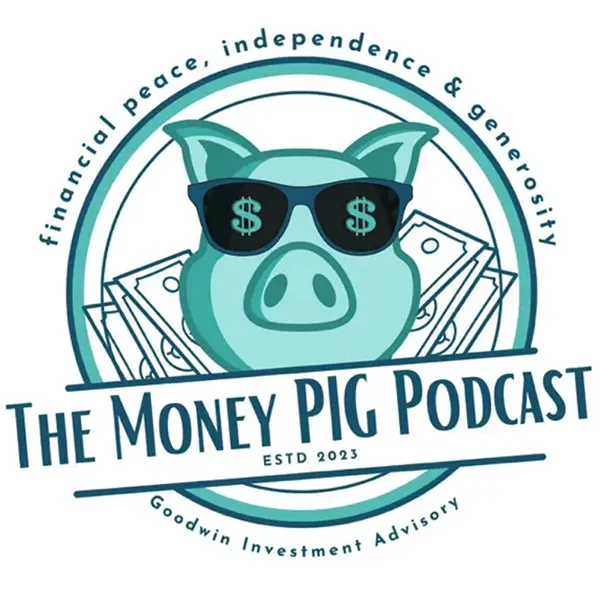February 13, 2023
The Markets
This time may be different…or it may not be.
There has been a lot of speculation about how the Federal Reserve’s policies will affect the United States economy. Economists have differing opinions about whether the country is headed for:
- A recession, which occurs when the economy stops growing and begins to contract; or
- A soft landing, which occurs when economic growth slows but does not decline.
It’s an important question because recessions often are accompanied by layoffs, rising unemployment rates, dwindling investor confidence, lower consumer spending, and stock market downturns.
Recently, a new theory bubbled up.
The United States may be experiencing rolling recessions, reported Rich Miller of Bloomberg. “Now there’s a new economic meme making the rounds. It’s called a rolling recession, and it’s a bit of a hybrid. One industry suffers a contraction, then another, but the economy as a whole never swoons, and the job market largely holds up…That framework doesn’t explain everything that’s going on with this puzzling post-pandemic economy, but it’s as good a description as any of what the U.S. has been going through since the Federal Reserve began lifting interest rates from zero in March of last year.”
Uncertainty around current economic conditions has a lot to do with the pandemic, according to Schwab’s chief investment strategist Liz Ann Sonders whose talk at the January National Retail Federation (NRF) conference was reported on by Fiona Soltes for the National Retail Federation. When lockdowns ended, demand for goods lifted prices and helped push inflation higher. When services became available again, demand shifted and we saw “pockets of weakness in many categories on the goods side, certainly in housing, that are definitely in recession territory.”
If rolling recessions don’t meld into a national recession, we could see continued economic expansion as inflation moves lower. It’s also possible we could see economic growth heat up and inflation remain at higher levels than we’ve become accustomed to having. It’s just too early to tell.
Major U.S. stock indices moved lower last week, reported Teresa Rivas of Barron’s. Treasury yields rose across maturities last week as economic data and Fed officials suggested that further rate hikes may be ahead.

Weekly Focus – Think About It
“Everyone talks about building a relationship with your customer. I think you build one with your employees first.”
—Angela Ahrendts, businessperson
Required Disclosures:
* These views are those of Carson Coaching, not the presenting Representative, the Representative’s Broker/Dealer, or Registered Investment Advisor, and should not be construed as investment advice.
* This newsletter was prepared by Carson Coaching. Carson Coaching is not affiliated with the named firm or broker/dealer.
* Government bonds and Treasury Bills are guaranteed by the U.S. government as to the timely payment of principal and interest and, if held to maturity, offer a fixed rate of return and fixed principal value. However, the value of fund shares is not guaranteed and will fluctuate.
* Corporate bonds are considered higher risk than government bonds but normally offer a higher yield and are subject to market, interest rate and credit risk as well as additional risks based on the quality of issuer coupon rate, price, yield, maturity, and redemption features.
* The Standard & Poor’s 500 (S&P 500) is an unmanaged group of securities considered to be representative of the stock market in general. You cannot invest directly in this index.
* All indexes referenced are unmanaged. The volatility of indexes could be materially different from that of a client’s portfolio. Unmanaged index returns do not reflect fees, expenses, or sales charges. Index performance is not indicative of the performance of any investment. You cannot invest directly in an index.
* The Dow Jones Global ex-U.S. Index covers approximately 95% of the market capitalization of the 45 developed and emerging countries included in the Index.
* The 10-year Treasury Note represents debt owed by the United States Treasury to the public. Since the U.S. Government is seen as a risk-free borrower, investors use the 10-year Treasury Note as a benchmark for the long-term bond market.
* Gold represents the 3:00 p.m. (London time) gold price as reported by the London Bullion Market Association and is expressed in U.S. Dollars per fine troy ounce. The source for gold data is Federal Reserve Bank of St. Louis (FRED), https://fred.stlouisfed.org/series/GOLDPMGBD228NLBM.
* The Bloomberg Commodity Index is designed to be a highly liquid and diversified benchmark for the commodity futures market. The Index is composed of futures contracts on 19 physical commodities and was launched on July 14, 1998.
* The DJ Equity All REIT Total Return Index measures the total return performance of the equity subcategory of the Real Estate Investment Trust (REIT) industry as calculated by Dow Jones.
* The Dow Jones Industrial Average (DJIA), commonly known as “The Dow,” is an index representing 30 stock of companies maintained and reviewed by the editors of The Wall Street Journal.
* The NASDAQ Composite is an unmanaged index of securities traded on the NASDAQ system.
* International investing involves special risks such as currency fluctuation and political instability and may not be suitable for all investors. These risks are often heightened for investments in emerging markets.
* Yahoo! Finance is the source for any reference to the performance of an index between two specific periods.
* The risk of loss in trading commodities and futures can be substantial. You should therefore carefully consider whether such trading is suitable for you in light of your financial condition. The high degree of leverage is often obtainable in commodity trading and can work against you as well as for you. The use of leverage can lead to large losses as well as gains.
* Opinions expressed are subject to change without notice and are not intended as investment advice or to predict future performance.
* Economic forecasts set forth may not develop as predicted and there can be no guarantee that strategies promoted will be successful.
* Past performance does not guarantee future results. Investing involves risk, including loss of principal.
* The foregoing information has been obtained from sources considered to be reliable, but we do not guarantee it is accurate or complete.
* There is no guarantee a diversified portfolio will enhance overall returns or outperform a non-diversified portfolio. Diversification does not protect against market risk.
* Asset allocation does not ensure a profit or protect against a loss.
* Consult your financial professional before making any investment decision.
Sources:
https://www.investopedia.com/terms/h/hardlanding.asp
https://www.investopedia.com/terms/r/recession.asp
https://www.bloomberg.com/news/articles/2023-02-09/what-is-a-rolling-recession-us-could-escape-economic-pain?cmpid=BBD020923_NEF&utm_medium=email&utm_source=newsletter&utm_term=230209&utm_campaign=nef (or go to https://resources.carsongroup.com/hubfs/WMC-Source/2023/02-13-23_Businessweek_Forget%20Hard%20or%20Soft%20Landing_3.pdf)
https://nrf.com/blog/charles-schwab-chief-investment-strategist-talks-rolling-recession
https://www.barrons.com/articles/stock-market-has-worst-week-of-2023-no-news-is-bad-news-ed6cc72c?refsec=the-trader&mod=topics_the-trader (or go to https://resources.carsongroup.com/hubfs/WMC-Source/2023/02-13-23_Barrons_The%20Stock%20Market%20Just%20Had%20Its%20Worst%20Week%20of%20the%20Year_5.pdf)
https://www.cnbc.com/2023/02/10/us-treasury-yields-investors-await-data-fed-speaker-remarks.html
https://hbr.org/2023/01/how-financial-accounting-screws-up-hr (or go to https://resources.carsongroup.com/hubfs/WMC-Source/2023/02-13-23_HBR_How%20Financial%20Accounting%20Screws%20Up%20HR_7.pdf)
https://www.bloomberg.com/opinion/articles/2023-02-08/us-companies-aren-t-firing-people-as-they-usually-do (or go to https://resources.carsongroup.com/hubfs/WMC-Source/2023/02-13-23_Bloomberg_US%20Companies%20Arent%20Firing%20As%20They%20Usually%20Do_8.pdf)
https://www.inc.com/partners-in-leadership/31-quotes-from-great-leaders-to-improve-workplace-satisfaction-for-employees.html








